Increase Red Blood Cells with These Natural Remedies
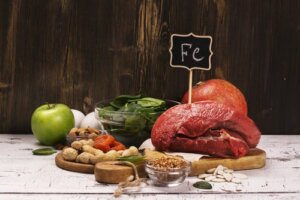
The best natural remedies to increase red blood cells are foods rich in iron and other essential nutrients for the body. Do you know what they are and how you can incorporate them into your diet in order to take advantage of all their benefits? In case you have any questions, don’t worry because below we’ll tell you everything you need to know about it.
Why are red blood cells important?
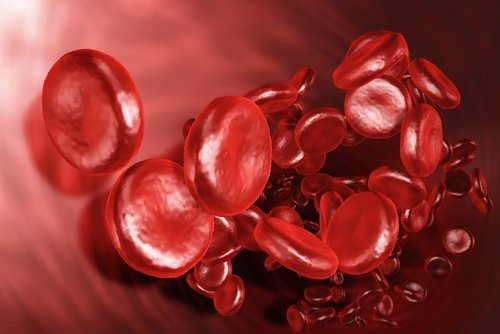
Erythrocytes, also known as red blood corpuscles or red blood cells, are indispensable for our bodies. This is because they transport oxygen-filled blood to all of the body’s tissues while eliminating carbon dioxide.
They are red in color because they contain hemoglobin, a protein-rich in iron. However, as time goes by, the cells die off and the bone marrow is in charge of manufacturing more.
Nevertheless, the body must rely on some necessary “ingredients” in order to do this. If not, anemia may occur. Anemia is characterized by low or nearly nonexistent production of red blood cells, or, additionally, by red cells that contain very little hemoglobin. The most common type of anemia is due to the low consumption of iron.
To avoid this problem, adults should consume 8 mg of iron a day. However, in the case of women who are menstruating, this amount should increase to 18 mg daily. In addition, in order to help your body absorb this nutrient, it’s recommended to eat foods that are rich in vitamin C.
Changes in habits to increase red blood cell count
It’s extremely important to maintain a healthy lifestyle, eat foods that contain iron (while maintaining a balanced diet), and, above all, to help prevent your body from getting anemia, or a low red blood cell count.
Some changes in habit that may help you are the following:
1. Eat more foods that are rich in iron
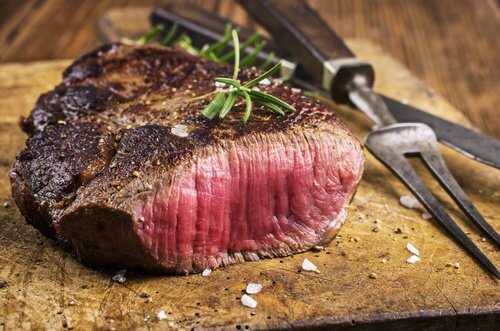
If you incorporate foods rich in iron into your diet, the body will have the ability to rebuild or replace those lost or damaged erythrocytes. So, here are some foods that are rich in iron:
- Red meat
- Egg yolks
- Plums and raisins
- Lentils (and legumes in general)
- Spinach and chard (and other green-leaf vegetables)
2. Consume more copper and folic acid
These two nutrients are essential for the formation of red blood cells because they’re also present in hemoglobin. In order to ingest more copper, we recommend eating:
- Poultry
- Whole grains
- Dark chocolate
- Mollusks
- Beans
- And, finally, walnuts
As for folic acid, or Vitamin B9, we can find it in:
- Legumes (lentils and beans)
- Green vegetables
- Whole-grain cereals
- Walnuts
3. Get enough vitamins A and C
Vitamin A contributes to the development of mother cells in the bone marrow, and this means a greater production of red blood cells. Where can we get Vitamin A?
- Apricots
- Carrots
- Spinach
- Bell peppers
- Plums
To get more vitamin C and increase red blood cell production, citrus fruits, tomatoes, and kiwis are excellent options.
4. Exercise more
Although an anemic person will probably have less desire to exercise, it is crucial to start, even if only with a light routine (go for a walk, ride a bicycle, swim, etc.).
Don’t forget that exercise is fundamental in the production of red blood cells and in having improved oxygen circulation in your entire body. Consult your doctor about this matter and follow their instructions.
5. Quit smoking and drinking alcohol
Bad habits make the situation worse. If you smoke or consume excessive amounts of alcohol, the health of your blood will deteriorate. Smoking and drinking affects the flexibility of blood vessels and hence contribute to unhealthy blood that is unable to circulate appropriately.
Homemade remedies for increasing red blood cells
At the first signs of weakness, headache, paleness of the skin, or coldness in the extremities (all which indicate anemia), it’s crucial to see a doctor. If treated properly, we can improve the situation thanks to these homemade remedies:
Red grapefruit and beets
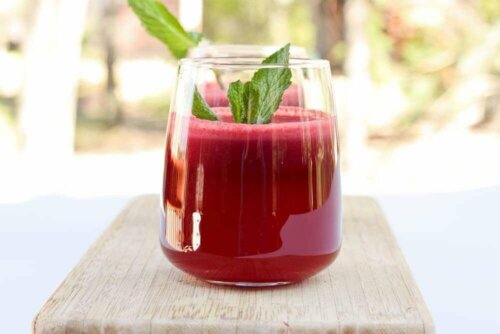
It’s believed that the juice of these two vegetables could supplement your diet and help increase red blood cell levels in the blood.
Ingredients
- 3 beets
- The juice of 1 grapefruit
Preparation
- Firstly, peel the beets, and then dice them into small cubes
- Secondly, squeeze the grapefruit
- Then, blend them well until homogenized
- Lastly, drink in moderation accompanied by a balanced diet
Walnut and pollen infusion
This is a common remedy from bees that can help us enormously if we suffer from anemia.
Note: if you’re allergic, refrain from consuming it without the authorization of your doctor.
Ingredients
- 2 c. of water
- 1 tsp. of bee pollen
- 2 tbsp. of walnut leaves
- 1 tsp. of cod liver oil
Preparation
- Firstly, add some walnut leaves to the water and bring to a boil
- Let the mixture continue to boil for 5 minutes, then remove from heat
- After that, let it sit for 5 minutes and strain the leaves
- Then, add the oil and pollen to the liquid
- Finally, divide the mixture into two daily doses
Garlic soup to promote red blood cells
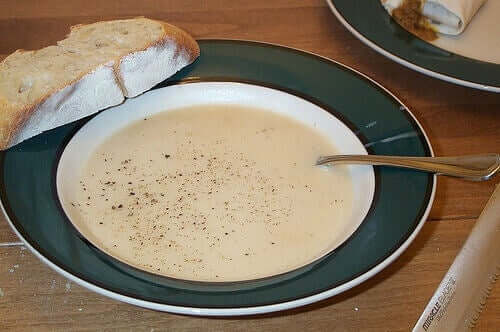
Eating garlic soup isn’t just a treat, but also a way to vary your diet and get the necessary nutrients to increase red blood cells. To prepare it you’ll need:
Ingredients
- 6 cloves of garlic
- 2 slices of bread
- 8 c. of water
- ½ c. of oil
- 1 tsp. paprika
Preparation
- Firstly, crush the peeled garlic cloves and fry them in oil
- When they are golden-brown, add the slices of bread and the paprika
- After that, pour in the water and cook for half an hour
- Lastly, consume a maximum of 3 cups throughout the day
What else can you do to increase red blood cells?
In addition to following the recommendations of your doctor, you should try to maintain good lifestyle habits and, above all, in relation to diet. Try to eat healthily, with nutritious foods that provide you with both short and long-term benefits, don’t starve, and learn to choose combinations that are best for you. To do this, you can always consult your doctor or a nutritionist.
All cited sources were thoroughly reviewed by our team to ensure their quality, reliability, currency, and validity. The bibliography of this article was considered reliable and of academic or scientific accuracy.
- Vieth, J. T., & Lane, D. R. (2014). Anemia. Emergency Medicine Clinics of North America. https://doi.org/10.1016/j.emc.2014.04.007
- Shaw, J. G., & Friedman, J. F. (2011). Iron deficiency anemia: Focus on infectious diseases in lesser developed countries. Anemia. https://doi.org/10.1155/2011/260380
- Higgins, P. D. R., & Rockey, D. C. (2003). Iron-deficiency anemia. Techniques in Gastrointestinal Endoscopy. https://doi.org/10.1053/j.tgie.2003.08.002.
- Geng S, et al. Comprehensive Analysis of the Components of Walnut Kernel (Juglans regia L.) in China. Journal of Food Quality 2001. Disponible en: https://www.hindawi.com/journals/jfq/2021/9302181/.
- Nahdi A, Hammami I, Brasse-Lagnel C, Pilard N, Hamdaoui MH, Beaumont C, El May M. Influence of garlic or its main active component diallyl disulfide on iron bioavailability and toxicity. Nutr Res. 2010 Feb;30(2):85-95. doi: 10.1016/j.nutres.2010.01.004. PMID: 20226993.
- Lofti M, et al. The Effects of Consuming 6 Weeks of Beetroot Juice (Beta vulgaris L.) on Hematological Parameters in Female Soccer Players. Journal of Kermanshah University of Medical Sciences 2018;22(3). Disponible en: https://brieflands.com/articles/jkums-82300.html.
- Lynch SR, Cook JD. Interaction of vitamin C and iron. Ann N Y Acad Sci. 1980;355:32-44. doi: 10.1111/j.1749-6632.1980.tb21325.x. PMID: 6940487.
- Fan FS. Iron deficiency anemia due to excessive green tea drinking. Clin Case Rep. 2016 Oct 5;4(11):1053-1056. doi: 10.1002/ccr3.707. PMID: 27830072; PMCID: PMC5093162.
- Morck TA, Lynch SR, Cook JD. Inhibition of food iron absorption by coffee. Am J Clin Nutr. 1983 Mar;37(3):416-20. doi: 10.1093/ajcn/37.3.416. PMID: 6402915.
This text is provided for informational purposes only and does not replace consultation with a professional. If in doubt, consult your specialist.








